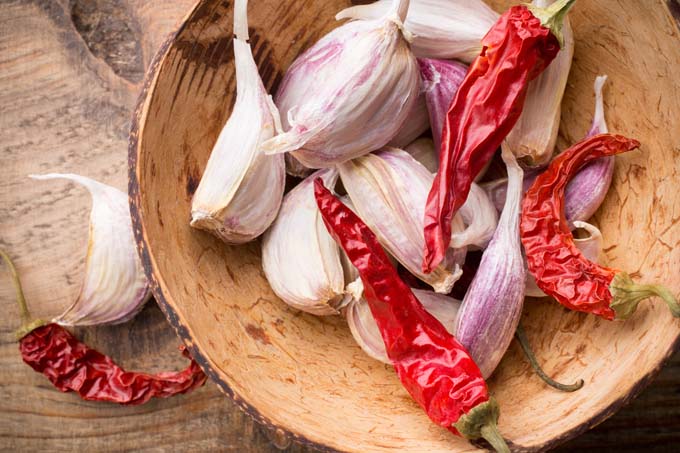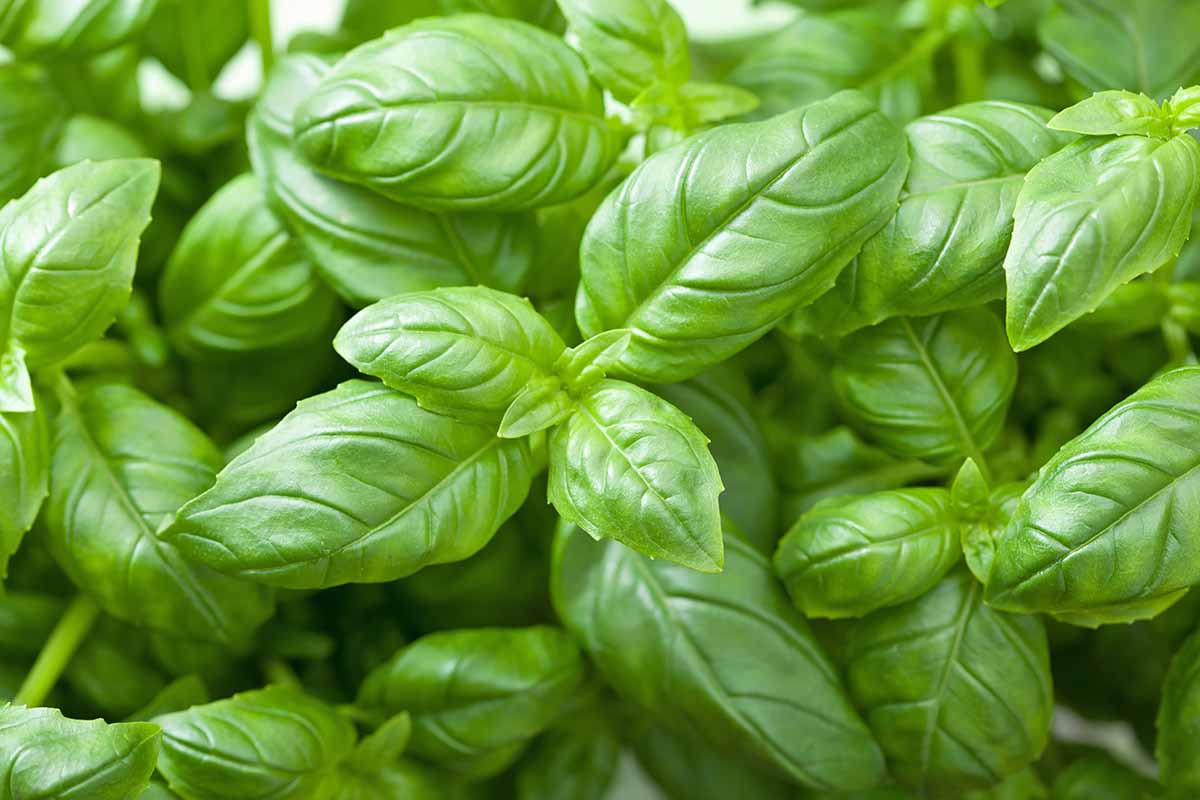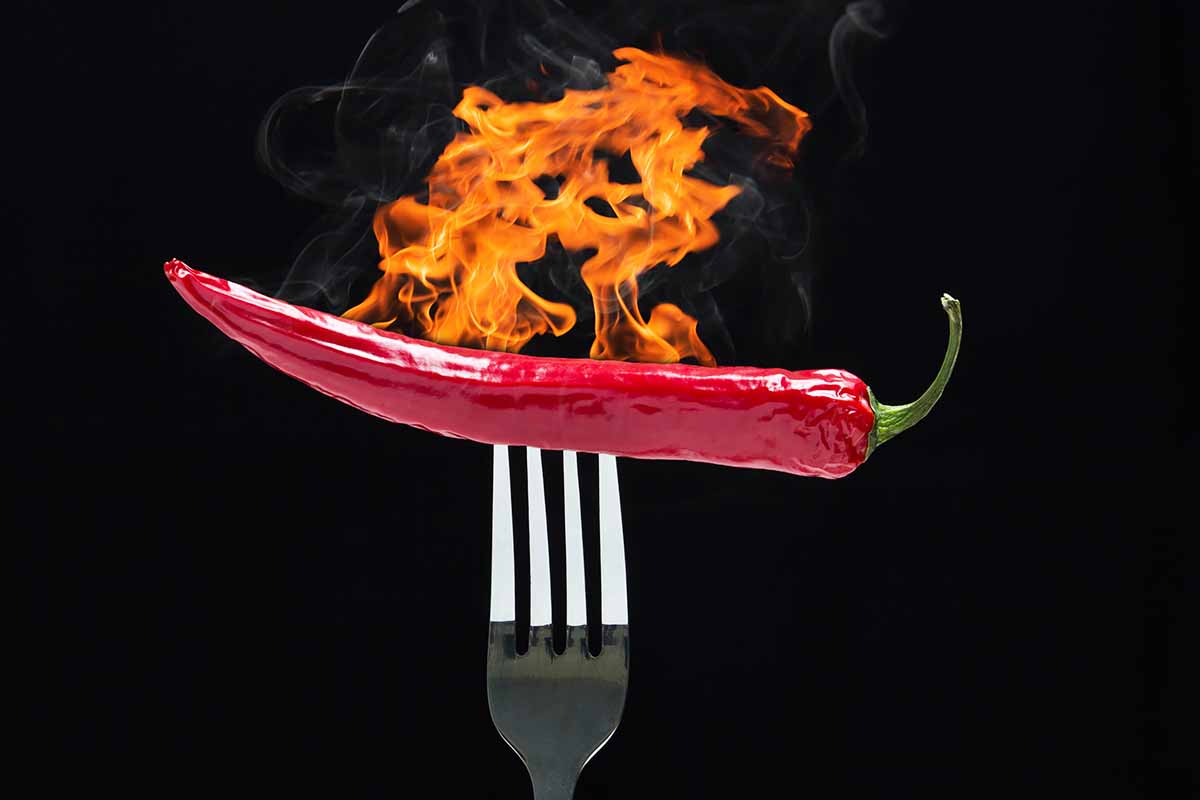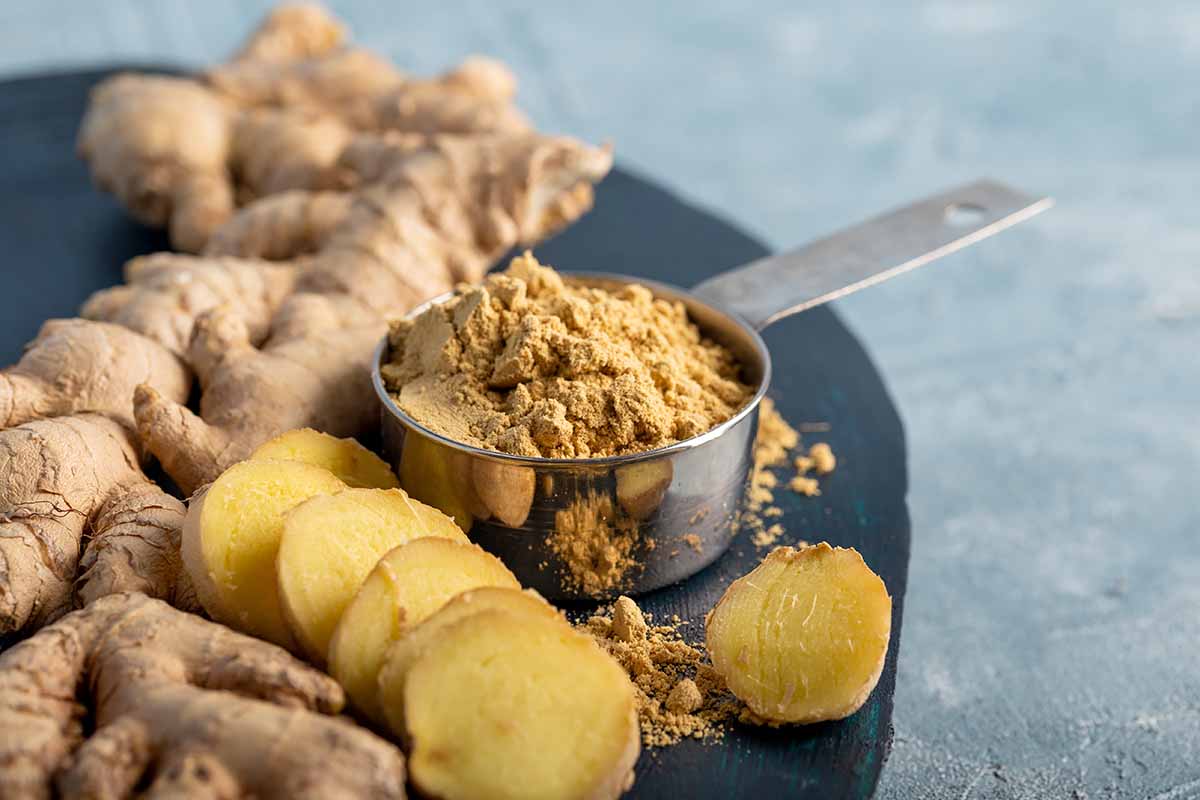Capsicum Frutescens
Webster’s Dictionary defines cayenne pepper as “a pungent condiment consisting of the ground dried fruits or seeds of hot peppers.” The use of this spice by the native peoples of the tropical Americas goes back thousands of years, although its introduction in Europe came much later.

Native Americans south of the Mexican border used cayenne as far back as 700 BC. Aztec royalty considered a treat of red chilies and chocolate delectable. And Columbus introduced the herb to Europe and compared its taste to that of the “black pepper.” In fact, Columbus is said to be the first person to have categorized cayenne as a pepper.
Today, there are over 150 different types of hot chilies cultivated around the world. The Aztec Herbal includes what is believed to be the first documentation of cayenne. The plant, described in detail, was used by the Aztec people as a remedy for toothaches and scabies.
Forty-five years later, in 1597, John Gerard mentions the plant in Gerard’s Herbal. A botanist, Gerard cited cayenne by the name “Indian Pepper,” also known as “ginnie.” It is said that Gerard was so respected by the people of his time, that his writings were used as late as 1912 in botany lectures at the University College in London.
Herbalist Nicholas Culpepper also mentions the spice in his own herbal, published in 1642, referring to cayenne as “this violent fruit,” and declaring it an aid to “help digestion, provoke urine, relieve toothache, preserve the teeth from rottenness, comfort a cold stomach, expel the stone from the kidney, and take away dimness of sight.”
Cayenne, although not the hottest of peppers (30,000-50,000 Scoville units), it is the type that is most commonly used medicinally. From super down to medium-hot, the fruit is full of color – Columbus originally brought the plant to Spain for its decorative value – and spices up most any recipe nicely, in addition to supplying the body with necessary and beneficial nutrients.
Like most varieties, cayenne peppers are quite easily cultivated. At maturity they stand up to three feet in height, and span approximately two feet in width. The plant bears an abundance of fruit, and therefore the average household would be more than aptly furnished with enough peppers for both themselves and their neighbors.
Need a place to store all of those chilies and chili flakes, once you’ve dried them? Check out Foodal’s review of the best spice racks.
Cooking With Cayenne
Cayenne’s uses in the kitchen are endless (unless you prefer a milder spice). A welcome addition to meat sauces, goulash, fish, shellfish, soup (check out Lynne’s Chicken Posol), vegetable dishes, and fiery Cajun and Creole cooking, the spice should be used with an easy hand, and extra care.
Naturally spicy, cayenne should be simmered for hours and allowed to blend with your recipe’s other ingredients before serving. The hottest parts of the pepper are located in the fruit’s seeds and interior, so if you’re looking for a more mild flavor, remove both before using.
If it’s a fiery dish you’re hungering for, by all means, use the whole pepper. If you’re not sure, keep a slice of bread nearby to reduce the sting. Contrary to popular belief, a cold drink will not relieve your burning mouth. Try butter, milk, or celery instead.

If you realize the dish is too hot before serving, the spiciness can easily be lowered by adding potatoes, noodles, or coconut – along with these other cooling foods that help balance excessive spiciness.
These might just make the soup a bit more like stew, or make the chili con carne a chili-mac, but in the end it’s all about making the meal enjoyable – do what you have to!
Therapeutic Properties of Cayenne Pepper
On the medicinal side, cayenne has been experimented with for centuries, and continues to be used for its valuable therapeutic properties.
A stimulant, it aids in digestion, helps normalize blood circulation, tones the nervous system, and helps to relieve pain and inflammation.
High doses of vitamin C and beta carotene quickly convert to vitamin A when they’re consumed, which is good for eye health.
Large amounts of capsaicin (an alkaloid) are also present, something that the Gale Encyclopedia of Cancer credits with reducing pain, suppressing cancer cells, and possibly even containing chemo-protective properties, documented in its use with cancer patients.
Cayenne’s essential oils stimulate the skin, but when using its oils, take care not to burn yourself. Click here to read more about using essential oils in cooking. Never use cayenne oil on sensitive skin or mucous membranes.
Therapeutically, fresh or dried chilies are preferable, and far less irritating to the skin than peppers that have been cooked. Its properties as a warming spice are particularly beneficial for those suffering from arthritic joint pain.
A plaster can be used, made with three tablespoons of white flour, one teaspoon of olive oil, and one teaspoon of the ground spice.
Add enough water to create a paste, then simply cover the skin with a thin piece of cloth, spread the mixture over the cloth, and add another cloth on top (just like making a sandwich). Once you’re plastered, sit back and enjoy the natural warmth, and the relief it provides your aching joints.
In essence, for those of you who like it “hot,” this spicy choice not only provides a happy palate, but a happy body as well.
As with any remedy, check with your doctor before using this herb for any type of therapeutic or medicinal purpose.
Looking to bone up on your knowledge of herbs and spices? Be sure to check out Foodal’s complete guide!
Sources
The Gale Encyclopedia of Cancer, Ellen Thackery- Editor, 2001




I love cayenne peppers. They are one of my favourite things to cook with, especially for my spaghetti sauces. I love to make my own sauce and I buy whatever base sauce is on sale, if it is an original one then I always add some flavour to it with cayenne peppers! In this article I learnt some things I didn’t even know about cayenne peppers which was awesome! Thank you!
megankl- Thank you! I’m glad you enjoyed the article. I never cooked with peppers until my son was around eleven. One day, he came home, and it was all about “hot.” Since then, I’ve altered numerous recipes to satisfy his palate without offending my own. 😀
I won’t say i love peppers or hate them or love-to-hate them and neither am i indifferent towards them, but i just might be a little bitty scared about the hot ‘lava’ within..plus i had a bad accident that involved chillies in the kitchen that i wouldn’t want to re-live right now…lets just say i had a very long teary session that day!..but oh well, i just might indulge in a little bit and add a little to my food…being extremely careful all the same 😉
dianethare- I’ve learned to appreciate peppers over the years, but yes, you have to be careful with them. I generally keep a wet paper towel nearby when I’m preparing a meal, as I’ve been an eye rubber from way back. I feel your tears! 😉
I do not particularly like spicy things but I am trying to get into them, a little. I have long heard about the good things that cayenne peppers can do for a body from migrain headaches to helping with “that time of the month”. It’s also supposed to help with weight management.
C. Lenell- As I mentioned in a previous post, I never added peppers to anything before my son decided they were the ultimate dinner staple. I can also state from experience, they definitely have an impact on headaches. As for weight management…… I might need to start eating cayenne more often!
I add a pinch or a squirt of Cayenne powder/sauce to every Mexican meal. I find it just gives you just enough of a kick to complement some of the sweeter and more potent chillis. I would love to cook with Ceyenne peppers, although they aren’t common in stores here. I have been thinking of just growing my own chills so might look at this I think!
Kittyworker,
I have found growing peppers to be quite challenging. My neighbor plants them in the summer and produces more than she can use. I, of course, benefit from that! 😉 None-the-less, I have been both successful and unsuccessful in my attempts to grow them indoors.
I love cayenne peppers too and even grow them at home. I use some of them while they are fresh, I make chili jam and dehydrate the rest for future use. I always thought that hot chili had therapeutic properties – I feel so much better after eating them – so I was not surprised by your closing comments.
Missbishi,
Thank you for your comments. As I stated in my previous post, I benefit from the numerous peppers growing in my neighbors garden, and like you, I dry them. My son took a new job in August, thus, my real cayenne fan has left the nest. When he came home to visit, he was very happy to receive the dried product. Since he turned seventeen, the bulk of his time has been spent living around the country. He’s become quite the cook!
I never knew of the medicinal properties of cayenne – I’m so glad to know that they have these properties as I use them all the time. I grow most of my own, and I dry them in my dehydrator before grinding to a powder for storage. Luckily, we love hot food in our house, so I can be as liberal as I please.
Incidentally, a dollop of plain yogurt is the best remedy for a burning mouth, if you’ve added a little too much chilli pepper to a dish, and it’s also good served with the actual meal too.
Thank you for collating this information on the medicinal properties – great excuse to eat even more hot dishes than usual!
Portia88,
Thank you for the added information! I may need that yogurt remedy one day ;-). I’m glad you enjoyed the article and information….. and as I’ve already stated….. I love new information!
I tend to like mild to medium spice, but this is something I might try adding a little of, to enhance the spice, as well as obtain the health benefits. I’m glad you mentioned the celery, bread, and buttermilk, because I’ll be sure to have one or more of them on hand, as well as some potatoes, coconut and noodles, just in case. If it works out, I have an empty spot in my garden where a cayenne plant could go.
Diane- My experience with cayenne and other hot peppers was born because of my son’s love for everything “hot,” and over the years I’ve learned to never cook with them without having bread nearby for an emergency. Thank you for stopping by and commenting!
I love it and have it regularly. I love anything hot and chillis are my favorite. I recently read that Cayenne pepper was recommended for dieters as it was said to help burn up the fat. I think it may be well worth a try if you want to lose weight. After all what have you got to lose???
I’ve recently started using cayenne in practically all of my meals (even my eggs) in an attempt to increase blood circulation and lose a bit of weight. I am also gearing up for hotter peppers, specifically scotch bonnets. Have you had any experiences with those in recipes?
I had no clue cayenne was so beneficial to your health. I’ve heard of spicy foods speeding up your metabolism, but I didn’t know this particular pepper was used in conjunction with cancer treatment. Very informative article.
I used to hate peppers until I learned about their great medicinal value. I am now an ardent user of this wonderful spice.
Your article has covered their specific health benefits in a detailed manner and pleased to learn that they are very beneficial even in the management of joint pain and cancer.
Well I do have a bit of a love hate relationship with these beauties. I do happen to love them, and they are great for adding some kick to an otherwise pretty dull dish, but often times they do not agree well with my stomach. Overall, though, they are beneficial for my health as they are good for high blood pressure, but the stomach issues do really temper that excitement. Oh well, as long as they are tasty I will continue to use them. Thank for sharing.